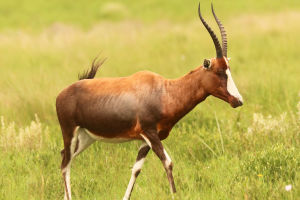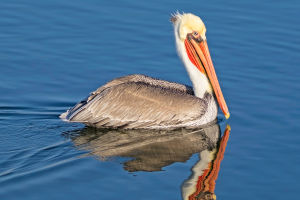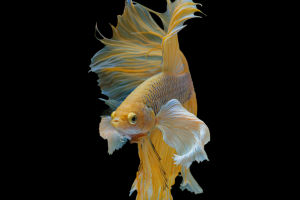The common eland, one of the largest and most impressive antelopes in Africa, is a true icon of the savanna. Known for its graceful appearance and incredible adaptability, this majestic creature roams across a wide range of habitats, from dry deserts to lush grasslands.
Despite its massive size, the common eland is gentle and peaceful, embodying the beauty of the African wilderness. Let’s explore what makes this antelope so fascinating and how it thrives in the wild.
Striking Appearance
The common eland, or Taurotragus oryx, is not only one of the largest antelopes but also one of the most visually striking. Males can weigh up to 2,200 pounds (1,000 kg), with females being slightly smaller. Their large bodies are supported by long, slender legs, and both males and females have spiraled horns that can reach up to 3 feet (1 meter) in length.
These horns are not just for show—they are used for defense and during mating competitions between males. Their coat is a warm tan color, with distinctive white stripes running vertically along their sides, and they often have a tuft of hair on their foreheads. This coloration helps them blend into their natural environment, providing some camouflage from predators like lions and hyenas.
Wild Animal Weekend: Common Eland
Video by Wild Animal Safari Inc
Adaptability in the Wild
What makes the common eland so remarkable is its incredible adaptability. Elands can thrive in a variety of environments, from arid deserts to wooded savannas. Unlike many animals that are restricted to specific habitats, elands are generalists when it comes to food and habitat. They can adjust their diets depending on the availability of food, eating grasses, herbs, and even leaves and bark when necessary.
During the dry season, when water is scarce, elands are known to survive without drinking for long periods. They can obtain enough moisture from the plants they consume, making them highly resilient in tough conditions. This adaptability has allowed them to flourish across much of Africa, from South Africa to Kenya and Sudan.
Social Structure and Behavior
Common elands are social animals, typically found in herds of 10 to 20 individuals, though larger groups may form during migration or when resources are abundant. These herds are usually made up of females and their young, with males leading solitary lives or forming bachelor groups.
Males are known for their dominant displays, often engaging in head-to-head combat using their massive horns to establish hierarchy within the group. However, these fights are rarely lethal, as the goal is to intimidate rather than injure. Despite their size, elands are remarkably agile and can jump up to 8 feet (2.5 meters) high when startled or threatened. This agility, combined with their horns and herd mentality, protects them from predators.
Conservation and Challenges
While common elands are not currently endangered, they face numerous challenges, primarily due to habitat loss and poaching. In some regions, they are hunted for their meat, hide, and horns, which has led to population declines in certain areas. Conservation efforts are crucial to protecting their habitats and ensuring their long-term survival.
In some protected areas and wildlife reserves, elands are thriving, thanks to efforts by local governments and conservation organizations. Programs focused on habitat restoration and anti-poaching initiatives have been instrumental in maintaining healthy populations of this majestic antelope.
Fun Facts About the Common Eland
1. Milk Production: Eland milk is rich in fat and protein, and in some regions, local communities have domesticated elands for milk production, as their milk is highly nutritious.
2. Noisy Travelers: Elands are known for their clicking knees. As they walk, their knee joints produce a clicking sound, which scientists believe may help them communicate within the herd.
3. Impressive Size: Despite their large size, elands can run up to 40 mph (64 km/h) to escape predators, making them surprisingly swift for such a large animal.
The common eland is a true marvel of nature, combining size, strength, and adaptability to thrive in some of Africa’s harshest environments. From their striking horns to their impressive ability to survive without water, these gentle giants are a symbol of resilience in the wild.
As we continue to protect their habitats and support conservation efforts, the future of the common eland looks promising, ensuring that these magnificent animals continue to roam Africa’s landscapes for generations to come.


